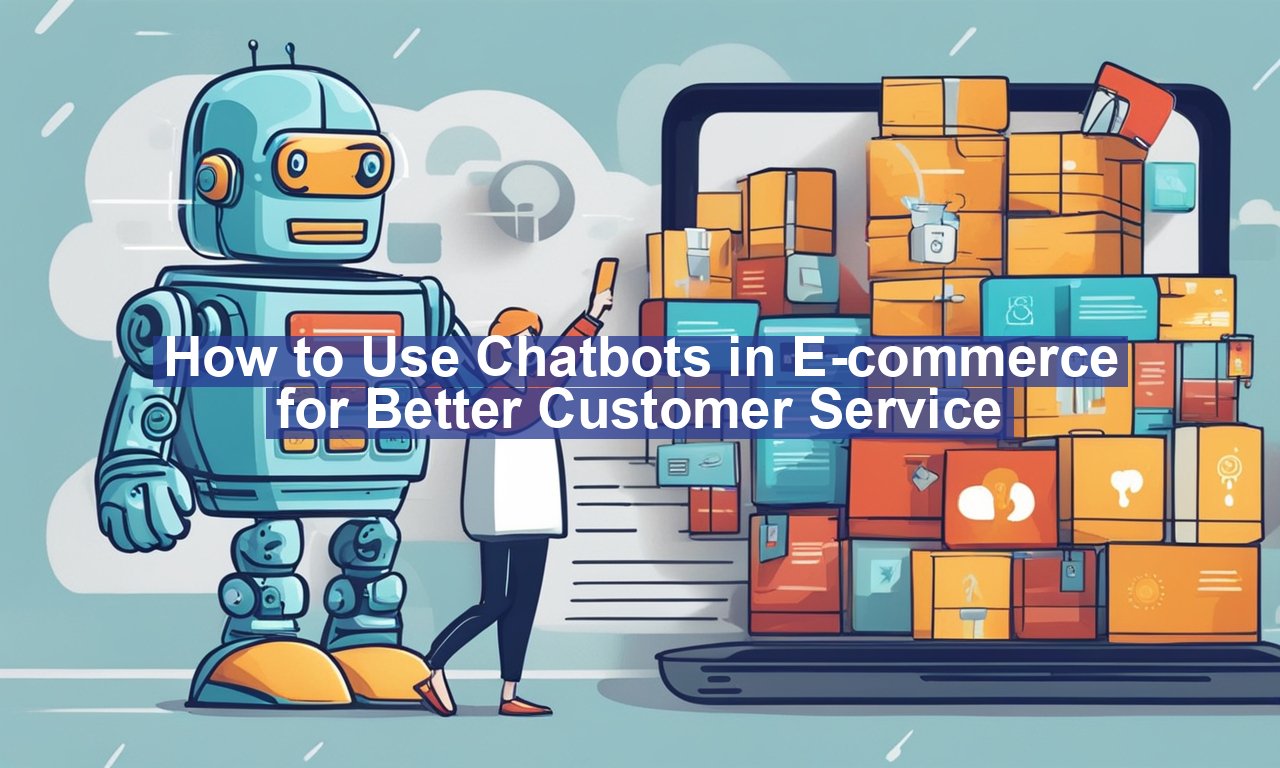How to use chatbots in e-commerce for better customer service picture this: It’s 3 AM, and you suddenly remember you need to buy a gift for an upcoming birthday. You hop on an e-commerce website, and instead of waiting for business hours to how to use chatbots in e-commerce for better customer service, you engage with a chatbot that answers your questions within seconds. Sounds convenient, right? That’s the power of chatbots in e-commerce. In this article, we will explore how to use chatbots to enhance customer service and why it can be a game-changer for your online business. We’ll also delve into the benefits of AI chatbots, offer practical tips for effective implementation, and provide some compelling reasons for you to consider integrating this cutting-edge technology.
Why Chatbots are Revolutionizing How to Use Chatbots in E-commerce for Better Customer Service
Chatbots have become invaluable tools for e-commerce businesses, primarily because they address several pain points in customer service.
Immediate Response Time: One of the biggest advantages is the ability to provide instant responses to customer inquiries, regardless of the time of day.
24/7 Availability: Chatbots are tireless workers; they don’t need breaks. This ensures your customers can get support whenever they need it.
Common Questions Chatbots Can Answer
Chatbots can be programmed to address a variety of common questions, which can significantly reduce the workload for human customer service agents.
–
- Order Status Updates
–
- Product Information
–
- Return and Refund Policies
–
- Troubleshooting Steps
–
- Shipping Information
According to a report by [PwC](https://www.pwc.com/gx/en/services/consulting/experience-centre/ai-predictions/embracing-ai-for-customer-service.html), 38% of consumers believe chatbots and virtual agents make it quicker and easier to get customer service answers.
Benefits of Implementing Chatbots
Chatbots offer a range of benefits that can improve both your business operations and customer satisfaction rates.
Cost-Effective Solution: Implementing chatbots reduces operational costs as they can handle multiple queries simultaneously, which decreases the need for a larger customer service team.
Personalized Experience: Advanced chatbots can be equipped with machine learning and natural language processing capabilities, allowing them to deliver personalized recommendations and interactions.
Data Collection: Chatbots can collect customer data and feedback that can be used to improve services and develop better marketing strategies. For a deeper dive into how AI enhances customer interactions, check out this detailed article by [MIT Technology Review](https://www.technologyreview.com/2021/06/28/1028860/chatbots-and-customer-service/).
How to Get Started with Chatbots
Interested in incorporating chatbots within your e-commerce business? Here are some steps to help you get started:
1. Define the Purpose
Identify what tasks you want the chatbot to perform. This could range from handling FAQs to assisting in the purchasing process.
2. Choose the Right Platform
Select a chatbot platform that aligns with your business needs. There are several options available like ManyChat, Chatfuel, and Salesforce Einstein that offer various features geared towards different business requirements.
3. Develop Conversational Scripts
Create scripts that the chatbot will use to interact with customers. Make sure these scripts are easy to understand and cover a wide range of queries to provide meaningful interactions.
4. Test Extensively
Before fully integrating the chatbot into your customer service system, conduct extensive testing to ensure it can handle various types of inquiries and scenarios effectively.
5. Monitor and Optimize
Post-implementation, monitor the chatbot’s performance through analytics and customer feedback to continually make improvements. This ensures your chatbot remains relevant and efficient.
Challenges to Keep in Mind
While the benefits are plentiful, it’s also important to recognize the challenges that come with implementing chatbots.
Lack of Human Touch: Robots can’t fully replace the human element, and some customers may still prefer to speak with a human agent.
Technical Glitches: Chatbots are not immune to technical errors, which can lead to frustrating customer experiences.
Continuous Updating: To keep the chatbot relevant and useful, you will need to regularly update its script and capabilities, which require time and effort.
Is a Chatbot Right for Your Business?
How to use chatbots in e-commerce for better customer service the decision to implement a chatbot should be based on your specific business needs and customer expectations. If you have a high volume of repetitive queries, a chatbot can be a valuable addition. However, if your business relies heavily on personalized customer interactions, a hybrid model that combines both chatbots and human agents might be more effective.
For more insights, consider reading this comprehensive guide on [How to Build a Successful Chatbot Strategy](https://www.forbes.com/sites/forbestechcouncil/2020/06/15/how-to-build-a-successful-chatbot-strategy) by Forbes.
Integrating a chatbot into your e-commerce platform can revolutionize your approach to customer service, making it more efficient and customer-friendly. By understanding how to best use this technology and recognizing its limitations, you can create a balanced and highly effective customer service strategy that keeps your clientele satisfied and coming back for more. Happy selling!


